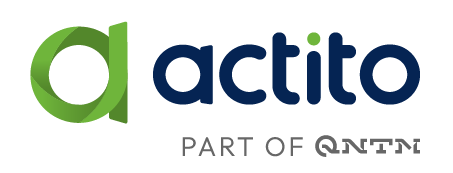_ Article
The different types of push notifications and their value in engaging your audience
While email remains the primary channel for communicating with audiences and customers, an increasing number of brands are leveraging push notifications. These offer the possibility of direct and instantaneous communication. In our world of immediacy, this is a powerful advantage.
Indeed, this format holds a great allure for consumers, as evidenced by the impressive opening rates highlighted in studies (we will share the figure in the article).
We will start by defining exactly what a push notification is, as it may not be clear to everyone. We will then review the main types of notifications used by brands, before presenting the three main benefits of this format.

What are push notifications?
Push notifications are messages sent ("pushed") by an application or website directly to the screen of a mobile device or computer, even when the application or browser is not open.
Unlike emails, which can accumulate in the inboxes of recipients without being read, push notifications are characterized by their ability to capture the user's attention in a way that is both instantaneous and direct.
Push notifications drastically reduce the journey between the sender and receiver of the message.
This communication channel not only increases the visibility of messages but also allows for real-time interaction with recipients, without requiring any action on their part. This is why push notifications are often used to convey urgent information, important messages, or time-limited offers.
From a technical standpoint, the mechanism of push notifications relies on a subscription principle that requires an initial action of consent from the user. Push notifications mean opt-in. An application or website can start sending notifications only if the user has explicitly agreed to receive them, often via a pop-up window asking for permission during the first use or visit.
The different types of push notifications
Push notifications can be distinguished based on the type of device they are sent to: mobile application, web browser, mobile wallet, or connected device.
Mobile application push notifications
Mobile application push notifications are notifications sent directly to the home screen of a smartphone or tablet by a mobile application installed on the device in question.
This type of notification is used by mobile application publishers to engage their users by informing them of new content, special offers, significant updates, or any other relevant information related to the application.
For instance, a fitness app may send push notifications to remind the user of their daily workout, a banking app might send notifications to inform its user of a banking transaction, and a media app could send a push notification to inform the user of breaking news.
Mobile push notifications can leverage geolocation features to send notifications based on the physical location of the user. This is used in the travel sector as well as in retail. For example, retail applications can send special offers to the user when they are near a store.
In general, mobile push notifications offer a high level of personalization. We will return to this important point later.

Web push notifications
Web push notifications are notifications sent to users by a website via their web browser.
This type of push notification appears as pop-ups or banners on a computer's desktop or a smartphone's screen. Web push notifications are used, for example, by e-commerce sites and media outlets to increase engagement rates and customer retention.
Again, users can only receive web push notifications if they have first given their explicit consent. This is typically done during their first visit to the website via a dialog box asking if they wish to allow the site to send notifications. Once permission is granted, the site can send notifications at any time, even if the user does not have the site open in their browser.
Most web browsers support web push notifications, including Google Chrome, Mozilla Firefox, Safari, and Edge.
Unlike mobile app push notifications, web push notifications do not require the user to download an application. Moreover, they can be sent to users without needing to collect personal information such as email or phone number beforehand. The only prerequisite is explicit consent.

Push notifications via the wallet
Wallet apps (such as Apple Wallet or Google Pay) allow smartphone users to store payment cards as well as loyalty cards directly on their mobile device. This is also known as an electronic wallet, and it's estimated that more than a half of American people use this functionality on a daily basis.
If you yourself use an electronic wallet on your mobile device, you know that it's possible to receive push notifications through the wallet. Balance changes, updates, special offers related to a loyalty card, event reminders: once again, the use cases for push notifications are numerous.
These push notifications have the advantage of being highly personalized and are generally appreciated by users to the extent that they are directly related to cards they have deliberately chosen to add to their electronic wallet.

Notifications on connected devices
Notifications on connected devices, also known as IoT (Internet of Things) notifications, allow for communication with users through "smart" devices: smartwatches, fitness bracelets, home automation systems, etc.
The principle, as you might have guessed, is the same as that of the other types of notifications: it involves sending messages directly to users' connected devices to communicate with them in an instantaneous and contextual manner.
For example:
A smartwatch can display a push notification to remind the user of their next appointment or alert them of insufficient physical activity.
A connected thermostat app can send a push notification to inform that the home's temperature is below the desired threshold and suggest increasing the heating before the user returns home.
A smart refrigerator app can send notifications to remind the user to consume food items that are about to expire, etc.
We could multiply the examples. All applications used for connected devices can serve as platforms for notifications.

Why are notifications of keen interest to both brands and consumers? We've identified 3 key reasons.
The 3 main benefits of push notifications
1 - Advanced personalization and precise targeting
Push notifications make possible a level of personalization and targeting far superior to what can be achieved through other channels (email, SMS, etc.).
The reason is simple: you have very precise data on the user's use of applications and services, their geographic location, their behavior, etc. And, as is well known, data is the raw material for personalized marketing.
Has the user of a fitness bracelet not reached their daily physical activity goal? The system detects it instantly and can send the user an equally instant notification. The notification will be targeted not only in terms of its content but also in terms of timing.
In short, notifications allow sending the right messages at the right time...and through the right channels (namely: the devices used by the users to use the application).
It is worth noting that the level of personalization is lower with web push notifications due to the smaller amount of data available. By construction, you have less information about the visitors to your website than about the users of your mobile application or your payment card...
The data collected on users also allows for the implementation of very fine customer segmentations, using several criteria (socio-demographic, behavioral, etc.), which can then be used to deploy ultra-targeted marketing campaigns.
Simply put, no other channel allows for sending messages that are as targeted and personalized.
2 - A maximized open rate
The open rate for push notifications is estimated at 16.3%, which is nearly 12 points higher than traditional communications.
The high open and read rates of push notifications are due to two things:
First, the precision of the targeting and the high level of message personalization we just discussed.
Second, the mode of notification delivery: a notification appears directly on the device's screen. The message is instantly received by the user who has enabled notification displays. It does not get mixed up among dozens of other messages, as is the case with emails.
Notifications respond to a societal trend and a strong consumer expectation: immediacy. A notification informing of a significant news flash or an imminent weather event is much more likely to be opened than a standard marketing email. Instant receipt encourages immediate opening.
The effectiveness of notifications is due to psychological mechanisms that would be lengthy to explain. Even though they can be intrusive, the fact that notifications have been accepted by the user is an explanation of their effectiveness. They generally meet a need expressed by the user, a demand. Further proof that opt-in rules are not barriers to performance, quite the contrary.
3 - Optimized engagement and retention
In most cases, push notifications serve a very specific function: encouraging user engagement with the mobile application, website, wallet, or connected device they are using.
To revisit the earlier example, sending a notification to a fitness bracelet user aims to encourage the user to continue using their bracelet on a daily basis.
Taking another example, an audio book app (like Audible) would do well to "push" notifications to its users to encourage them to discover new books and to increase user retention.
This is particularly strategic in the world of mobile apps. Users often download apps that they quickly forget about. Sending notifications is the best way to remind them of the app's existence and to develop their engagement.
Key takeaways
Push notifications are messages sent directly to users, whether on their web browser or smartphone screen. The power of push notifications lies in their immediacy. The average open rate of notifications attests to the interest users have in this means of communication.
The performance of a push notification strategy depends on the relevance of the approach adopted. The main challenge associated with push notifications is managing the frequency. Too many notifications can lead to a feeling of intrusiveness that goes against the desired effect. This is what we will discuss (among other things) in the next article dedicated to best practices in push notification management.
In the meantime, don't hesitate to experiment with the different types of push notifications presented in this article and measure their impact on your key performance indicators. Push notifications are an excellent way of boosting your business and creating a special relationship with your users. So, are you ready to move up a gear?


